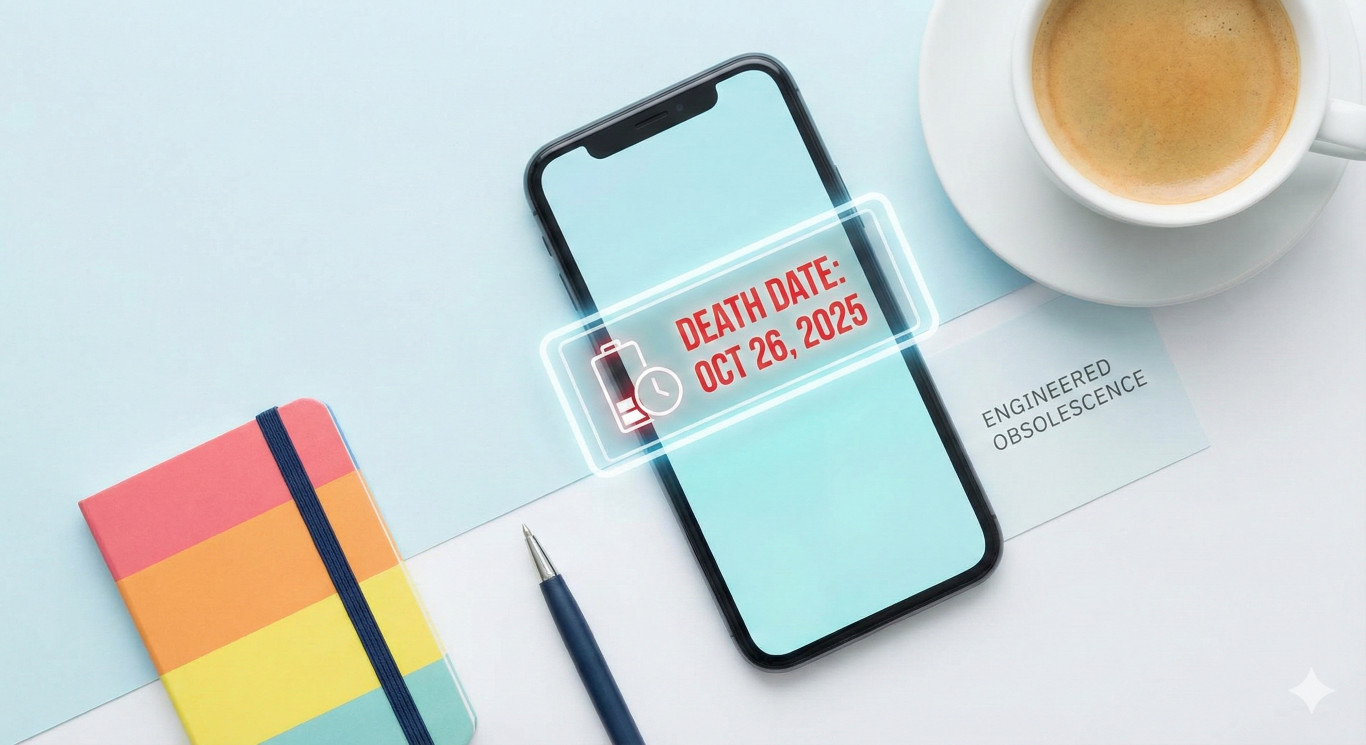What is Digital Privacy in the Context of AI?
In today’s world, where artificial intelligence (AI) systems permeate every aspect of our lives, digital privacy has taken on new dimensions. It’s about safeguarding the personal information we generate and share while interacting with these technologies. From social media platforms to virtual assistants, AI collects vast amounts of data, including our browsing habits, location, and even sensitive details like health records and financial information. Protecting this data is not just about maintaining confidentiality; it’s about preserving our autonomy and freedom in an increasingly digital world.
Why Protecting Personal Data Matters
The implications of compromised personal data are far-reaching. Identity theft, unauthorized surveillance, and targeted manipulation are just a few of the risks we face. Consider the Cambridge Analytica scandal, where millions of Facebook users’ data was harvested without consent and used to influence political campaigns. This incident underscores the critical importance of robust privacy protections. Without them, we risk becoming pawns in a game we don’t fully understand.
Common Threats to Digital Privacy in the AI Era
- Data Breaches: High-profile breaches like the Equifax incident in 2017, where the personal data of 147 million people was exposed, highlight the vulnerability of our information. Hackers and cybercriminals are constantly seeking ways to exploit system weaknesses, making data breaches an ever-present threat.
- Surveillance: AI-powered surveillance systems are becoming increasingly sophisticated, capable of tracking our movements and behaviors with alarming precision. While these systems can enhance security in some contexts, they also raise concerns about mass surveillance and the erosion of individual privacy.
- Misuse of Data: Your data is valuable, and companies are eager to collect and monetize it. From targeted advertising to selling data to third parties, the potential for misuse is significant. The recent controversy surrounding Clearview AI, a facial recognition company that scraped billions of images from the internet without consent, serves as a stark reminder of this threat.
- Algorithmic Bias: AI systems are trained on data, and if that data is biased, the system will perpetuate those biases. This can lead to discriminatory outcomes in areas like hiring, lending, and even criminal justice. Understanding and addressing algorithmic bias is crucial for ensuring fairness and equity in the AI age.
Privacy isn’t just about secrets. It’s about deciding who sees your information and how it’s used.

Practical Steps to Protect Your Privacy
- Be Mindful of What You Share: Exercise caution when providing personal information online. Consider whether the information is truly necessary and who will have access to it.
- Review Privacy Policies: Take the time to read the privacy policies of the services you use. Pay attention to how your data will be collected, used, and shared.
- Use Strong Passwords and Two-Factor Authentication: Protect your accounts with strong, unique passwords and enable two-factor authentication whenever possible.
- Keep Your Software Updated: Regularly update your operating system and applications to ensure you have the latest security patches.
- Be Wary of Phishing Scams: Be cautious of unsolicited emails or messages asking for personal information. Verify the sender’s identity before providing any sensitive data.
- Use Privacy-Enhancing Tools: Consider using tools like privacy-focused browsers (e.g., Brave, Tor) and search engines (e.g., DuckDuckGo) to minimize data collection.
- Encrypt Your Data: Use encryption tools to protect sensitive files and communications. Services like ProtonMail and Signal offer end-to-end encryption.
- Stay Informed: Keep up with the latest developments in AI and privacy. Follow reputable sources and be aware of emerging threats.
What Kind of Data Do AI Systems Collect?
AI systems are voracious data collectors. They gather a wide range of information, often without users fully grasping the extent. Understanding what they collect empowers you to make informed decisions about your privacy.
- Personally Identifiable Information (PII): This includes your name, address, email, phone number, and other details that can directly identify you.
- Behavioral Data: AI tracks your online behavior, including websites visited, search queries, purchases, and interactions with apps.
- Location Data: Your smartphone or other devices with GPS capabilities reveal your whereabouts. Even your IP address can provide a general location.
- Preference Data: AI learns your preferences based on your interactions, such as the videos you watch, the music you listen to, and the products you buy.
- Biometric Data: Some AI systems collect biometric data like fingerprints, facial scans, and voice patterns for identification and authentication.
- Health Data: Wearable devices and health apps can collect data on your heart rate, sleep patterns, and other health metrics.
What Can Go Wrong?
The potential risks associated with AI data collection are significant.
- Data Breaches: A data breach can expose your personal information to hackers, leading to identity theft, financial fraud, and other harms.
- Surveillance and Privacy Erosion: The constant collection of data can create a sense of being constantly watched, eroding your sense of privacy and freedom.
- Misuse of Data: Companies may sell your data to third parties or use it for purposes you didn’t consent to, such as targeted advertising or discriminatory practices.
- Algorithmic Bias: AI systems can perpetuate and amplify existing biases in society, leading to unfair and discriminatory outcomes.
Awareness and Consent
- Educate Yourself: Understand how AI systems work and the types of data they collect. Read privacy policies carefully, even if they’re long and complex.
- Give Informed Consent: Don’t blindly agree to terms and conditions. Make sure you understand what you’re consenting to before sharing your data.
- Review Privacy Settings: Regularly check and adjust the privacy settings on your devices and apps. Limit the data you share to what’s necessary.
Tools and Strategies to Protect Your Privacy
- Use Privacy-Focused Browsers and Search Engines: Consider using browsers like Brave or Tor and search engines like DuckDuckGo that prioritize privacy.
- Manage App Permissions: Review the permissions you’ve granted to apps on your smartphone and revoke any that are unnecessary.
- Use a VPN: A Virtual Private Network (VPN) encrypts your internet traffic and masks your IP address, making it harder for companies and governments to track your online activity.
- Be Careful What You Post on Social Media: Think twice before sharing personal information or photos on social media. Remember that once something is online, it’s difficult to remove completely.
- Opt Out of Targeted Advertising: Many companies allow you to opt out of targeted advertising. Check their privacy settings or use tools like the Digital Advertising Alliance’s opt-out page.
- Use Strong Passwords and Two-Factor Authentication: Protect your accounts with strong, unique passwords and enable two-factor authentication for an added layer of security.
Be mindful of the data you share. Ask yourself: “Is this information essential for the service to function?” If not, consider withholding it.
Encryption: Shielding Your Data
Encryption is a powerful tool for safeguarding your data. It scrambles your information, making it unreadable to anyone who doesn’t have the decryption key. Think of it as a digital lockbox for your sensitive data.
Types of Encryption and When to Use Them
- Symmetric Encryption: This method uses the same key for both encryption and decryption. It’s fast and efficient, making it suitable for encrypting large files or data in transit. Tools like BitLocker (built into Windows) and VeraCrypt offer symmetric encryption.
- Asymmetric Encryption: This approach uses a pair of keys: a public key for encryption and a private key for decryption. It’s ideal for secure communication, as you can share your public key without compromising your private key. Popular email services like ProtonMail and messaging apps like Signal use asymmetric encryption.
Encryption Best Practices
- Use Strong Passphrases: Your encryption is only as strong as the passphrase protecting it. Choose long, complex passphrases that are difficult to guess.
- Enable Full Disk Encryption: If your device is lost or stolen, full disk encryption ensures that your data remains inaccessible to unauthorized users.
- Encrypt Sensitive Files: Use encryption software to protect individual files containing sensitive information, such as financial records or medical documents.
- Consider End-to-End Encryption: When communicating with others, choose platforms that offer end-to-end encryption, meaning only you and the recipient can read the messages.
Limiting Data Access and Sharing
Sharing less data is a simple yet effective way to enhance your privacy.
Strategies for Minimizing Data Exposure
- Be Selective: Share only the information necessary for the service you’re using.
- Use Anonymous Accounts: Create accounts with pseudonyms or disposable email addresses when possible.
- Limit App Permissions: Review and restrict the permissions granted to apps on your devices.
- Use Privacy-Focused Social Networks: Consider alternatives to mainstream social media platforms that prioritize data privacy, such as Mastodon or Diaspora.
Reading and Understanding Privacy Policies
Privacy policies may seem daunting, but they provide crucial information about how companies handle your data. Look for key details such as:
- Data Collection Practices: What data is collected and for what purposes?
- Data Sharing: Will your data be shared with third parties? If so, who and for what reasons?
- Data Retention: How long will your data be stored?
- Your Rights: Do you have the right to access, correct, or delete your data?
Controlling Data Sharing Permissions
Many platforms allow you to manage how your data is shared.
- Adjust Settings: Explore the privacy settings of your devices, apps, and online accounts. Opt out of data sharing for advertising or other purposes whenever possible.
- Use Browser Extensions: Browser extensions like Privacy Badger and uBlock Origin can help block trackers and limit data collection by websites.
- Delete Old Accounts: If you no longer use a service, delete your account to prevent your data from being stored indefinitely.
Protecting Against Malware and Ransomware
Malware and ransomware are malicious software that can wreak havoc on your digital life. They can steal your data, encrypt your files, or even take control of your devices. Protecting yourself from these threats is essential in the AI era, where sensitive data is increasingly at risk.
Common Threats
- Viruses: Self-replicating programs that attach themselves to other files and spread when those files are executed.
- Trojans: Disguised as legitimate software, Trojans trick users into downloading them, then unleash their malicious payload.
- Ransomware: A type of malware that encrypts your files and demands payment (often in cryptocurrency) to decrypt them.
- Spyware: Secretly monitors your online activity and collects personal information without your knowledge.
- Adware: Displays unwanted advertisements on your device, often slowing down its performance.
Prevention Strategies
- Use Antivirus and Anti-Malware Software: Install reputable security software and keep it updated. Popular options include Avast, Bitdefender, Norton, and Kaspersky.
- Be Cautious with Downloads: Only download files from trusted sources. Be wary of clicking on links or opening attachments in emails from unknown senders.
- Regularly Back Up Your Data: Back up your important files to an external hard drive or cloud storage service. This ensures you can recover your data in case of a ransomware attack or other data loss event.
- Use Strong Passwords and Two-Factor Authentication: Protect your accounts with strong, unique passwords and enable two-factor authentication whenever possible.
- Keep Your Software Updated: Regularly update your operating system, applications, and browser plugins to patch security vulnerabilities that malware can exploit.
- Educate Yourself: Learn about the latest malware and ransomware threats and how to protect yourself. Resources like the Cybersecurity & Infrastructure Security Agency (CISA) website and the National Cyber Security Alliance (NCSA) offer valuable information and tips.

Secure Communication with AI Systems
When interacting with AI chatbots, virtual assistants, or other AI-powered services, ensuring secure communication is crucial. These systems often handle sensitive information, and you need to take steps to protect your data from prying eyes.
Best Practices
- Use Secure Networks: Avoid using public Wi-Fi networks for sensitive interactions with AI systems. If you must use public Wi-Fi, consider using a VPN to encrypt your traffic.
- Verify the Service: Before sharing personal information with an AI system, make sure it’s legitimate. Check the website or app’s URL and look for security indicators like HTTPS and a padlock icon in the address bar.
- Be Mindful of What You Share: Don’t provide more information than necessary. If an AI system asks for sensitive data that seems irrelevant to its function, consider declining or finding an alternative service.
- Be Wary of Social Engineering: Cybercriminals may try to trick you into revealing personal information through social engineering tactics. Be suspicious of unsolicited requests for information and verify the identity of anyone claiming to represent a company or service.
If you no longer use a service, delete your account to prevent your data from being stored indefinitely.
Share Less, Stay Safer: Data Minimization
The principle of data minimization encourages collecting and storing only the data that is strictly necessary for a specific purpose. This approach reduces the risk of data breaches and misuse.
- Provide Only Necessary Information: When interacting with AI systems, be mindful of the data you share. Ask yourself: “Is this information essential for the service to function?” If not, consider withholding it.
- Review Data Collection Practices: Familiarize yourself with the data collection practices of the services you use. Check their privacy policies to understand what data they collect and why.
- Opt Out of Data Collection: Many companies offer options to limit data collection. Explore the privacy settings of your devices and apps to see if you can opt out of certain data collection practices.
Understanding and Managing Data Retention Policies
Data retention policies outline how long companies keep your data. It’s essential to understand these policies because they impact your digital footprint.
- Read Privacy Policies: Pay attention to the data retention section of privacy policies. Some companies may retain your data indefinitely, while others may have specific deletion schedules.
- Choose Services with Clear Retention Policies: When possible, opt for services with transparent and reasonable data retention policies.
- Request Data Deletion: If you no longer use a service, exercise your right to request data deletion. Most companies have procedures in place to handle such requests.
Regular Data Audits and Deletion Practices
Periodically review the data you’ve shared with various services and delete any information that is no longer necessary. This proactive approach helps you maintain control over your digital footprint.
Staying Informed and Adapting to New Threats
The digital landscape is constantly evolving, and new privacy threats emerge regularly. It’s crucial to stay informed and adapt your practices accordingly.
- Follow Reputable Sources: Stay updated on the latest privacy news and trends by following reputable sources like the Electronic Frontier Foundation (EFF), the Center for Democracy & Technology (CDT), and Privacy International.
- Participate in Online Communities: Join online forums and communities dedicated to privacy and security. Share your knowledge and learn from others.
- Be Skeptical: Approach new technologies and services with a healthy dose of skepticism. Question how they collect and use your data before adopting them.
Conclusion: Can We Trust Machines with Our Sensitive Data?
There is no straightforward answer. AI can do amazing things, but it can also put our privacy at risk. We can’t just assume everything is fine. We need to know the dangers, take steps to protect ourselves, and make sure companies are honest about how they use our data.
Privacy isn’t just about secrets. It’s about deciding who sees your information and how it’s used. As AI gets more powerful, protecting your privacy is vital. By following the practices outlined in this guide, you can take meaningful steps toward a more secure and private digital life.





